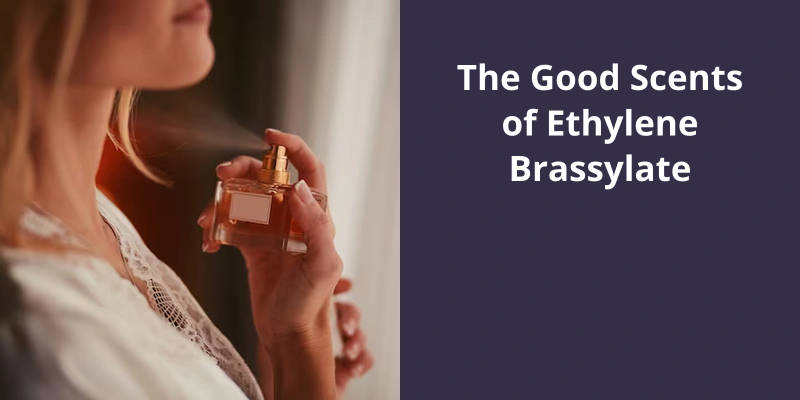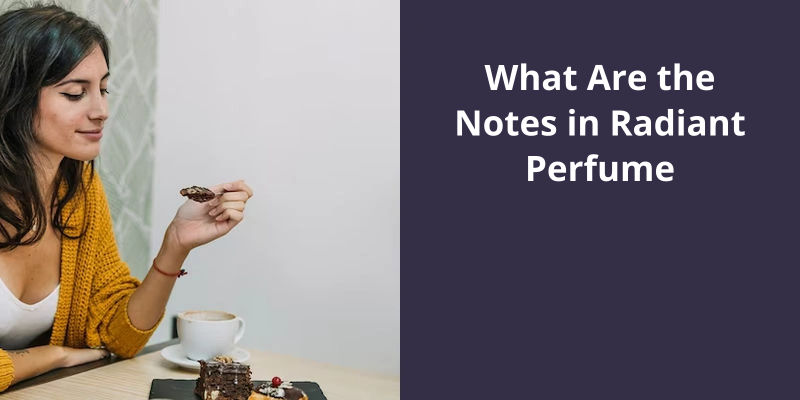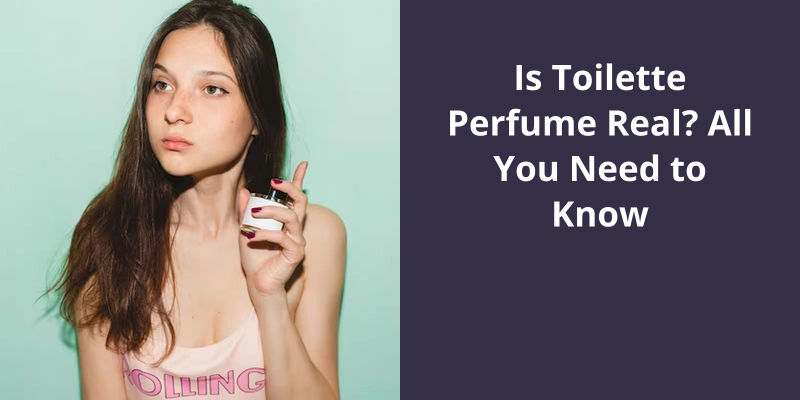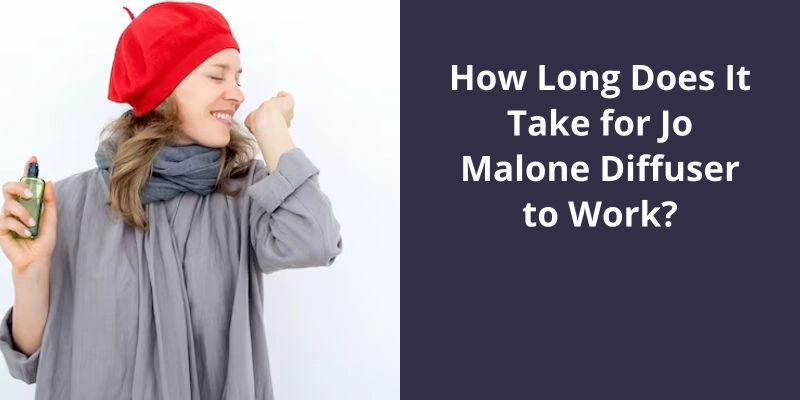“Ethylene Brassylate, often used in the perfume industry, is known for its pleasant, musky, floral fragrance. This synthetically produced aroma compound is renowned for its long-lasting scent, making it a popular choice in crafting personal care products such as soaps, lotions, and deodorants. It’s not just confined to perfumery, but also used in the flavor industry to give a unique taste to certain food items and beverages. Despite its synthetic origin, Ethylene Brassylate is harmless and frequently used to add a touch of luxury to various products. So, its good scents elevate the sensory experience, whether in perfumery or gastronomy.

Is Ethylene Brassylate Fragrance Free?
Ethylene brassylate is an intriguing fragrance ingredient that’s used in various cosmetics and skin care products. Known for it’s delightful scent, it offers a sweet and musk-like aroma that captivates the senses. On the contrary, it’s a synthetic fragrance ingredient that imparts it’s pleasant scent to the products it’s used in.
It adds a touch of allure and elegance, making the products more appealing to the consumers.
As with any fragrance ingredient, some individuals may experience sensitivities or allergies to it. Therefore, it’s crucial to perform patch tests and use products containing ethylene brassylate responsibly. Following proper usage guidelines and consulting with professionals can help ensure a pleasant and safe experience with ethylene brassylate-based products.
Fragrances not only contribute to the overall appeal of a product but can also evoke emotions and memories, making them an integral part of the beauty industry.
Although it isn’t fragrance-free, responsible usage and patch testing can help ensure a safe and enjoyable experience for consumers.
One popular lab-made ingredient used in many fragrances today is ethylene brassylate, which possesses a musk-like scent. In the past, musk fragrances were obtained from the secretions of animals like the musk deer. However, due to ethical and environmental concerns, fragrance creators have turned to science to recreate this beloved scent. Using various laboratory methods, they’re able to produce ethylene brassylate, which serves as a base note and stabilizer, providing that desired musk-like aroma.
What Does Ethylene Brassylate Smell Like?
Ethylene brassylate is a compound used in the fragrance industry to create musk-like scents. It’s smell can be described as warm, sensual, and animalistic, with a hint of sweetness. This compound serves as a base note in many popular perfumes and colognes, providing a solid foundation and enhancing the overall scent.
In the past, musk fragrances were derived from the secretions of animals like the musk deer. However, due to ethical and environmental concerns, the use of natural musk has been heavily regulated, leading to the development of synthetic alternatives like ethylene brassylate. The synthetic version allows perfumers to recreate the allure of musk without harming animals.
One common method involves the reaction of ethylene oxide and brassyl chloride, resulting in the formation of the compound. This lab-made ingredient is then carefully blended with other fragrance notes to create a harmonious and long-lasting scent.
One of the key advantages of ethylene brassylate is it’s stability. As a base note, it not only provides longevity to fragrances but also helps to balance and support the top and middle notes. This stability allows perfumers to create complex compositions that last throughout the day and develop beautifully on the skin.
It’s versatility and ability to blend well with other ingredients make it a valuable tool for perfumers in creating unique and captivating scents.
It’s synthetic production has enabled perfumers to continue crafting alluring and long-lasting scents while adhering to ethical standards.
The History and Evolution of Musk in Fragrance
Musk has a long and captivating history in the world of fragrance. It’s been used for centuries as a base note, providing depth and sensuality to perfumes. One of the most beloved musk notes is Ethylene Brassylate.
Ethylene Brassylate was first created in the 1950s as a synthetic alternative to natural musk derived from animals. It’s a powerful aroma compound that replicates the intoxicating scent of animal musk without the ethical concerns.
Over the years, the use of musk in fragrances has evolved. In the past, musk was often an overpowering and dominant note in perfumes. However, modern perfumers have found innovative ways to harness the allure of musk without overwhelming the other fragrance components.
Today, Ethylene Brassylate is used in a wide range of perfumes, from classic to contemporary. It’s unmistakable scent adds a warm, sensual touch to fragrances, making them captivating and alluring.
The journey of musk in fragrance is a testament to the art of perfumery, with Ethylene Brassylate being a prime example of how synthetic compounds can replicate the beauty of natural ingredients while respecting animal welfare.
The flash point of ethylene brassylate, a fragrance ingredient, is recorded at 200 °F. This compound is a clear liquid with a color ranging from colorless to light yellow. Ethylene brassylate is characterized by it’s powdery sweet floral ambrette musk woody aroma, making it a sought-after component in perfumes and scented products.
What Is the Flash Point of Ethylene Brassylate?
Ethylene brassylate is a fascinating compound widely known for it’s pleasant and distinctive scent. It’s widely used in the fragrance industry due to it’s unique olfactory characteristics. One important property of ethylene brassylate is it’s flash point, which refers to the temperature at which it can ignite when exposed to an open flame or spark.
When it comes to it’s physical properties, ethylene brassylate is a clear liquid that may appear colorless to light yellow. It’s a powdery sweet floral odor, reminiscent of ambrette, musk, and woody notes.
In addition to it’s unique scent, ethylene brassylate also has a melting point of -8 °C. This low melting point suggests that the compound can solidify or crystallize at relatively low temperatures, which could affect it’s physical appearance or the ease of handling and storing the substance.
It’s worth mentioning that ethylene brassylate is a chemically stable compound, which means it isn’t easily decomposed or degraded under normal conditions. This stability contributes to it’s longevity as a fragrance ingredient, allowing perfumes and products containing this compound to maintain their desired scent over extended periods.
It’s a clear liquid, potentially appearing colorless or light yellow, with a powdery sweet floral scent reminiscent of ambrette, musk, and woody notes. The compound has a melting point of -8 °C, indicating it’s ability to solidify at low temperatures, and displays chemical stability, allowing it to maintain it’s fragrance over time.
The Use of Ethylene Brassylate in the Fragrance Industry
Ethylene brassylate is a synthetic compound commonly used in the fragrance industry. It’s known for it’s warm and creamy scent reminiscent of musk. This compound is used as a fixative in perfumes, extending the longevity of the fragrance and helping it adhere to the skin. Ethylene brassylate adds a smooth and sensual element to fragrances, often described as comforting and slightly sweet. It’s a versatile ingredient, used in various types of perfumes including floral, oriental, and woody scents. Overall, ethylene brassylate plays an important role in creating unique and long-lasting fragrances that bring pleasure to our olfactory senses.
Hedione, a fragrance ingredient, exudes a subtle and invigorating scent that captures the essence of jasmine. It’s notes of green, floral, citrus, and fruitiness combine to deliver a captivating aroma that’s both refreshing and uplifting. In the world of perfumery, Hedione is often combined with various other ingredients, including citrus, floral, and woody notes, resulting in a beautifully balanced and captivating fragrance.
What Does Hedione Smell Like?
Hedione, a well-known aroma compound in the fragrance industry, carries a distinct and enchanting scent. It’s delicate and fresh aroma is often likened to jasmine, with prominent green and floral undertones. In addition, there’s a subtle hint of citrus and fruitiness that adds a delightful touch to it’s overall fragrance profile.
These notes lend a sense of brightness and energy, creating a well-balanced and captivating aroma that’s both invigorating and alluring. When combined with other complementary ingredients, hedione can bring out the best qualities of each component, resulting in a harmonious and memorable olfactory experience.
The History and Origins of Hedione as an Aroma Compound in the Fragrance Industry.
Hedione, also known as methyl dihydrojasmonate, is an important aroma compound widely used in the fragrance industry. It was first discovered in the 1960s by scientists at Givaudan, a leading fragrance and flavor company.
Hedione is derived from jasmonic acid, a natural compound found in jasmine flowers. Scientists were captivated by the delightful scent of jasmine, and sought to create a synthetic version that could be used in perfumes.
What makes hedione particularly fascinating is it’s ability to enhance and amplify the overall fragrance of a perfume. It not only possesses a pleasant smell itself, but also has the unique property of boosting the other scent components in a fragrance.
It’s fresh, citrusy, and slightly floral aroma is often described as airy and transparent. Hedione has been used in various fragrances to not only add a touch of jasmine-like note, but also to provide a lift and radiance to the overall composition.
Over the years, hedione has become a staple ingredient in many perfumes, contributing to the creation of captivating scents that leave a lasting impression. It’s versatility and ability to enhance other aroma compounds make it one of the good scents in the fragrance industry.
Conclusion
It’s ability to evoke a range of emotions, from comfort and nostalgia to elegance and sophistication, is truly remarkable.





